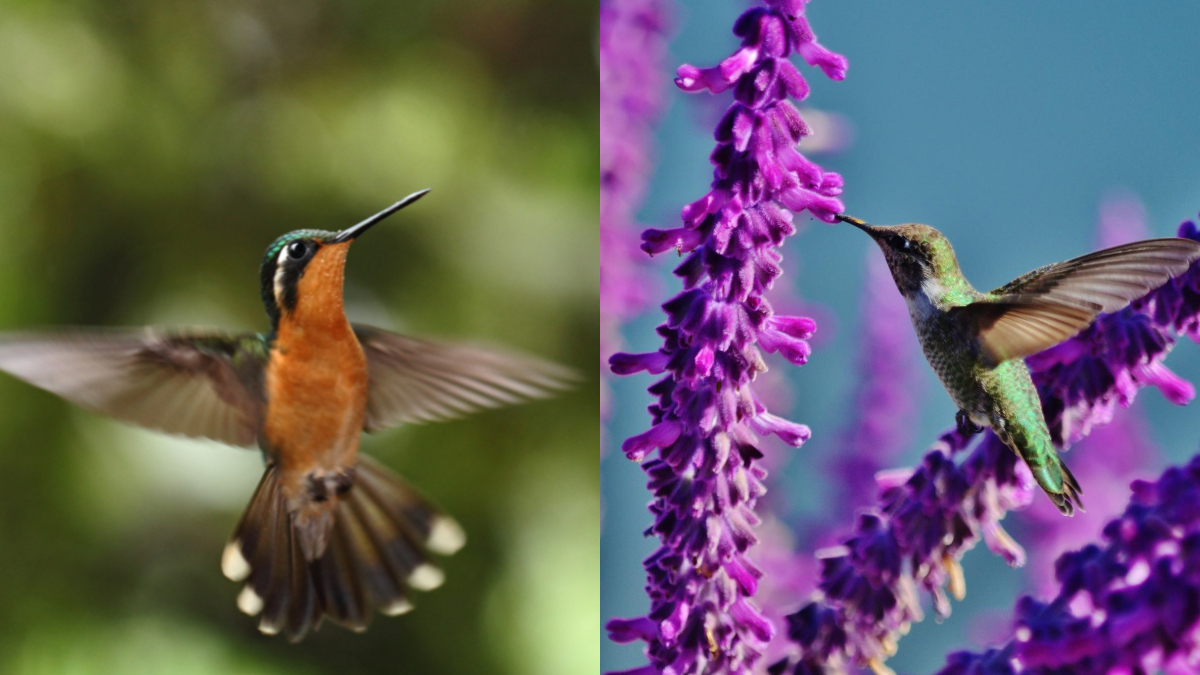If you have a fondness for hummingbirds, you may be curious about when these birds leave California each year. These small, dazzling creatures never fail to captivate us as they flit around our gardens.
Despite their small size, hummingbirds are a big deal. Birdwatchers eagerly await their arrival each year because these delightful birds possess unique qualities.
When it comes to migrating birds, hummingbirds are at the top of the list. Every year, they embark on journeys to various cities, states, and countries in search of tropical regions where they can find food and breed.
Residents of California are fortunate to host three species of hummingbirds throughout the year. However, some migratory species only make a stopover in the state. So, when exactly do these visiting birds bid farewell to California?
When Do Hummingbirds Leave California?
Hummingbirds typically leave California in the fall. They begin their departure around September, and by mid-November, most of them have already left. As the days grow shorter and colder, it becomes increasingly difficult for them to find food. Therefore, they head to warmer places like Central America and Mexico to spend the winter.
What makes their departure even more intriguing is the pattern followed by these hummingbirds. Male hummingbirds tend to leave California before the females. The females wait until they have prepared their offspring to migrate on their own before starting their journey.
Common Hummingbird Species In California
California is home to three species of hummingbirds: Allen’s, Anna’s, and Calliope’s hummingbirds. These birds can be found in California throughout the year. Additionally, migratory species such as Black-chinned, Rufous, and Costa’s hummingbirds also visit California.
Where Can You Find Hummingbirds in California?
In addition to house gardens, hummingbirds can be found in popular locations such as the San Francisco Bay Area, the University of California Arboretum Botanic Garden, and the Cabrillo National Monument. These locations are ideal for spotting hummingbirds because they have many native plants that provide nectar, their main food source.
When Do Hummingbirds Arrive In California?
Migrating hummingbirds begin to arrive in California at the end of January. Unlike other migrating birds that travel in groups, hummingbirds migrate individually. The males arrive first to establish their territories, while the females arrive a bit later. Some hummingbirds continue to arrive until mid-May, but by the end of June, all hummingbirds migrating beyond California have left.
Do The Migration Patterns Of Hummingbirds In California Change?
The migration patterns of hummingbirds in California are not fixed. These patterns are primarily influenced by various factors, especially weather conditions. Hummingbirds migrate in search of warmer climates where they can find abundant supplies of their primary food sources, including nectar from flowers and insects.
What Kinds Of Plants Should Be Grown To Attract Hummingbirds?
Growing plants is the best way to attract hummingbirds since their primary food source is nectar obtained from plants. Some favorite plants of hummingbirds in California include red yucca, black sage, hummingbird sage, manzanitas, and California figwort. Opting for native Californian plants can also benefit the local ecosystem. However, it is important to minimize the use of pesticides, chemical fertilizers, and herbicides during planting, as these substances can harm both birds and the plants they rely on.
Can You Attract Hummingbirds With Feeders?
Another way to provide food for hummingbirds is through feeders. Hummingbirds are naturally drawn to vibrant colors, so it is best to choose feeders in bright colors, particularly shades of red, pink, and orange. Nectar feeders can be prepared with a simple solution of one cup of sugar and about four cups of water. It is important to avoid adding food coloring and additives to the solution. The feeder should be filled with the solution and hung outside, either on tree branches or apartment windows. The solution should be changed every few days to prevent bacterial growth.
When Should You Put Up Your Hummingbird Feeders In California?
While some residents in California keep their bird feeders out all year to feed year-round resident birds, putting up your feeder in early January will attract the first set of migrating hummingbirds.
When Should Hummingbird Feeders Be Taken Down In California?
If you haven’t seen any hummingbirds at your feeders for a couple of weeks, it is safe to take them down by mid-November. However, you can leave them out all year to feed year-round resident birds or in case of old or injured hummingbirds that are unable to migrate during winter.
Where Do California Hummingbirds Migrate To In The Winter?
When hummingbirds leave California, they journey southward to overwintering areas in Mexico, Guatemala, Costa Rica, and Panama. However, resident hummingbirds like Anna’s, Allen’s, and Calliope hummingbirds stay in California throughout the year.
How Long Does It Take a California Hummingbird to Migrate?
The time it takes for California hummingbirds to migrate varies depending on their destination. A California hummingbird can cover the distance from the northernmost part of the state to the Mexican border, spanning 900 miles, in approximately 30 hours of continuous flight, maintaining an average migrating speed of 30 mph. Northern California hummingbirds have to fly approximately 3,400 miles to reach Panama, which takes them about 113 hours. Some hummingbirds adopt a more leisurely pace, flying for as little as 1 hour per day, while others embark on non-stop flights of up to 500 miles in about 20 hours.
Conclusion
If you’ve had the pleasure of witnessing the dance of hummingbirds in your own backyard, you know how magical it is to see these beautiful birds return year after year. They remember which flowers are their favorites and mark your home as a resting spot on their grand tour. By keeping your garden welcoming, you can continue to attract these little travelers and enjoy their presence. Imagine the stories they could tell if they could talk about their travels! Until next time, happy bird watching.
